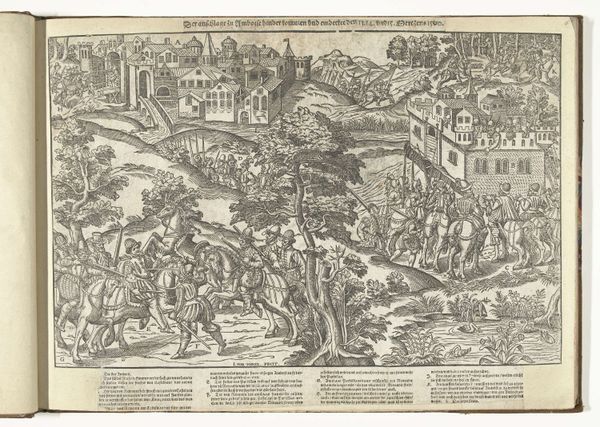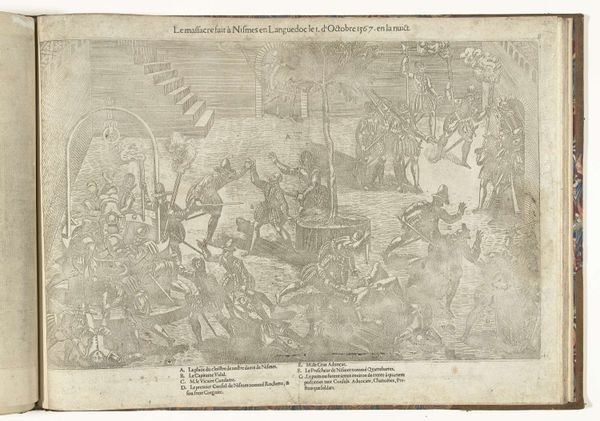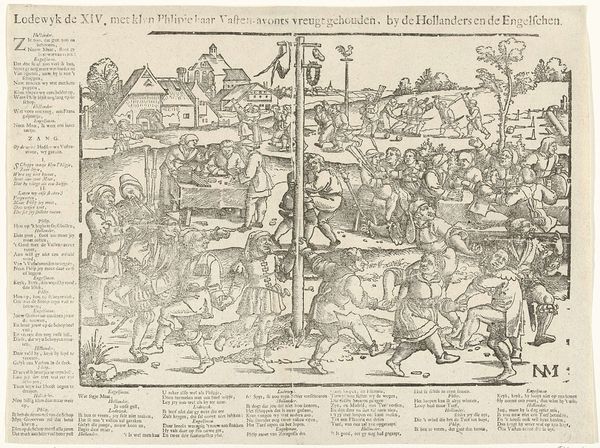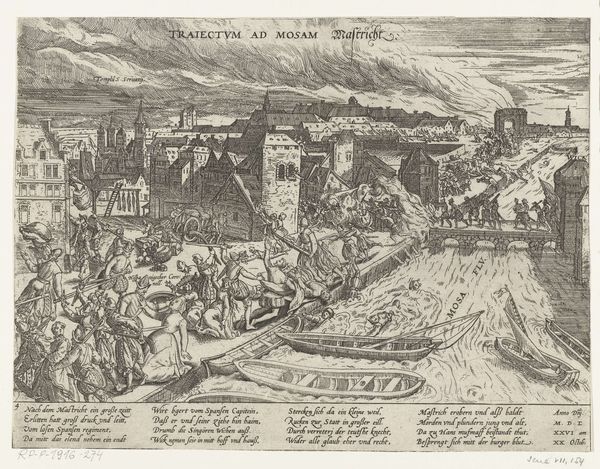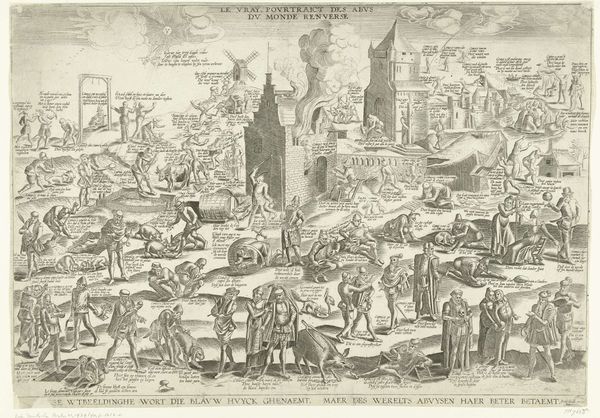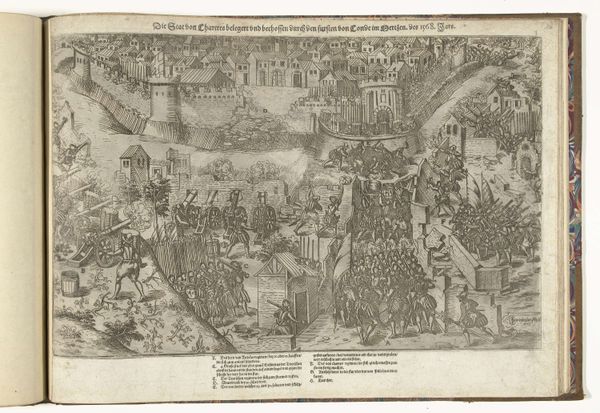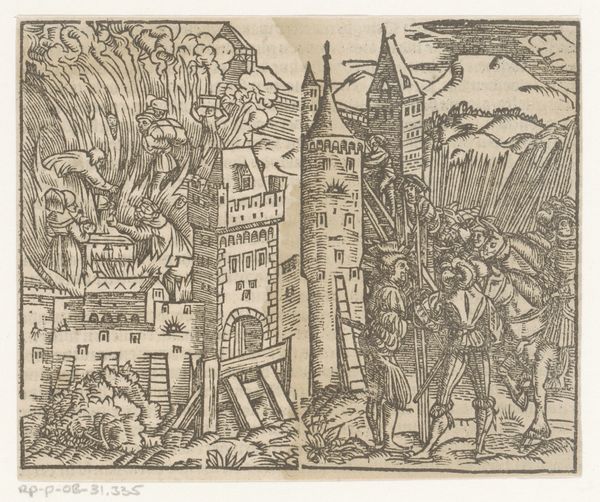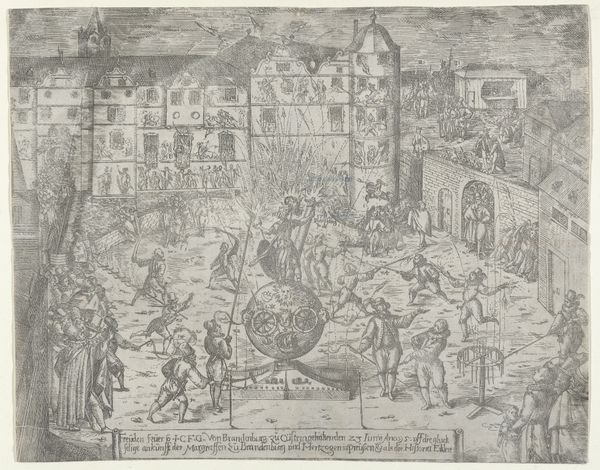
print, etching, engraving
#
narrative-art
#
dutch-golden-age
# print
#
etching
#
genre-painting
#
engraving
Dimensions: height 311 mm, width 415 mm
Copyright: Rijks Museum: Open Domain
Curator: Here we have Johannes Kannewet’s "Het oud vermakelijk luylekker-land", an engraving and etching probably made somewhere between 1725 and 1780. Editor: It's quite the whimsical scene! I’m struck by the bizarre juxtaposition of feasting, fighting, and flying cooked birds. What are we to make of all these contradictory elements? Curator: The engraving presents us with a clear structural opposition: on the left, apparent abundance and idleness, with people feasting; on the right, a kind of chaotic disarray and architectural absurdity. Observe the careful lines creating texture and form – the way Kannewet contrasts the soft, rounded figures of the feasting party with the sharper angles of the building. Editor: I see that. So, is this a commentary on different modes of living? Curator: Perhaps. Through close visual analysis, we can decode symbolic relationships. Notice how the feasting occurs closer to the viewer, presented as initially inviting. Yet, consider the figures, their postures somewhat grotesque. This could subtly undermine that initial appeal. The structure invites comparison, pushing us to interpret its implicit value judgement. Editor: It feels almost allegorical, but I'm having a hard time nailing down a precise meaning. Curator: The ambiguity is crucial! Rather than a didactic illustration, the print compels us to actively consider the formal oppositions and how those generate complex ideas. Ask yourself about the building blocks, and through their syntax consider how Kannewet subtly suggests that "leisure" without purpose breeds a type of ridiculous chaos. Editor: So by paying close attention to form, one can derive meaning by understanding its underlying semiotics? Curator: Precisely! Hopefully, thinking about the relation between line, figure, and the print’s overall structure provides you with one approach to interpreting such narrative complexity. Editor: It definitely does. I'll try looking closer at the artist's choice of form and see what narratives emerge. Thanks!
Comments
No comments
Be the first to comment and join the conversation on the ultimate creative platform.



